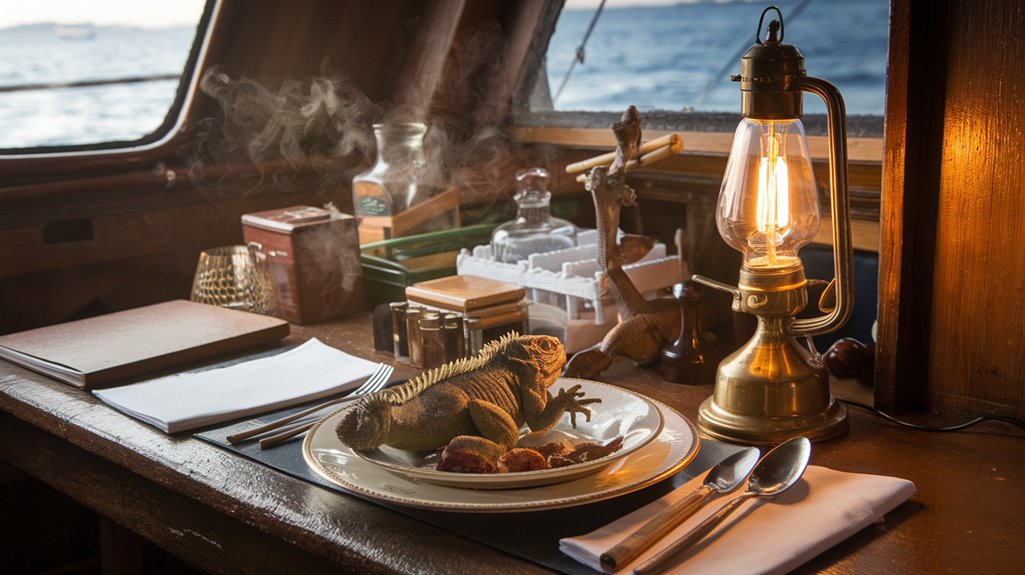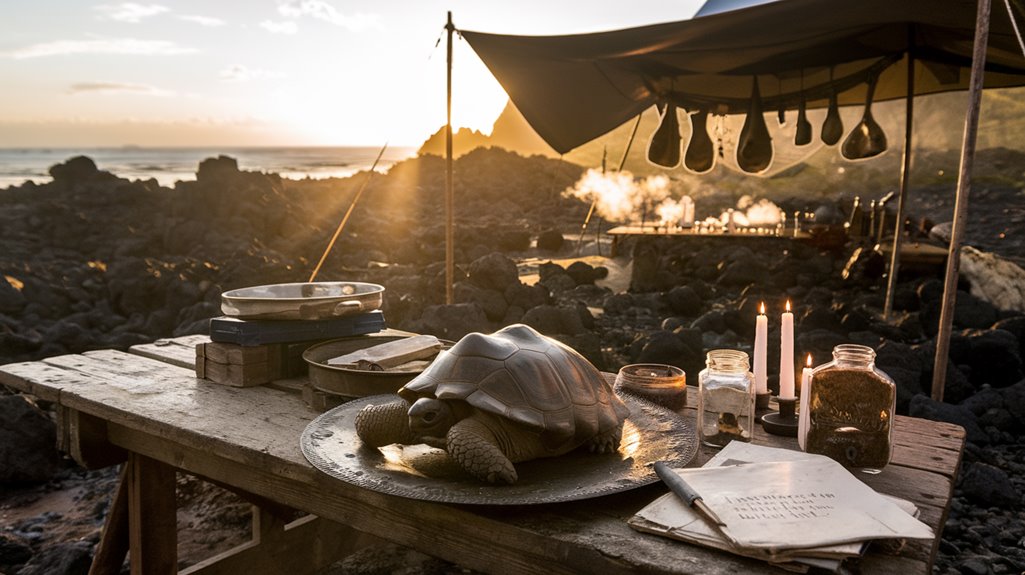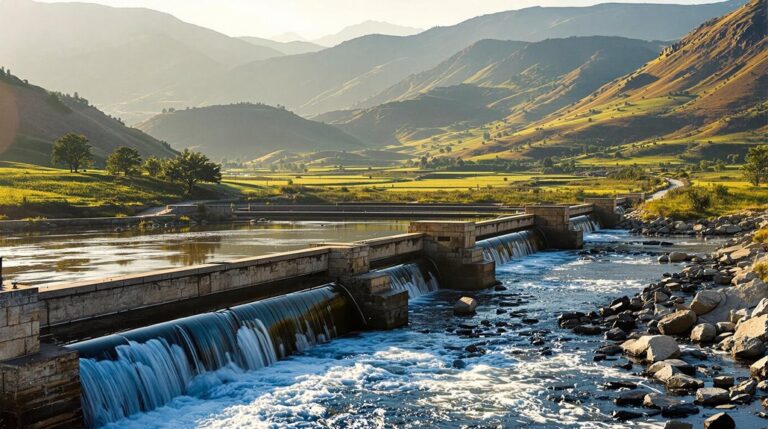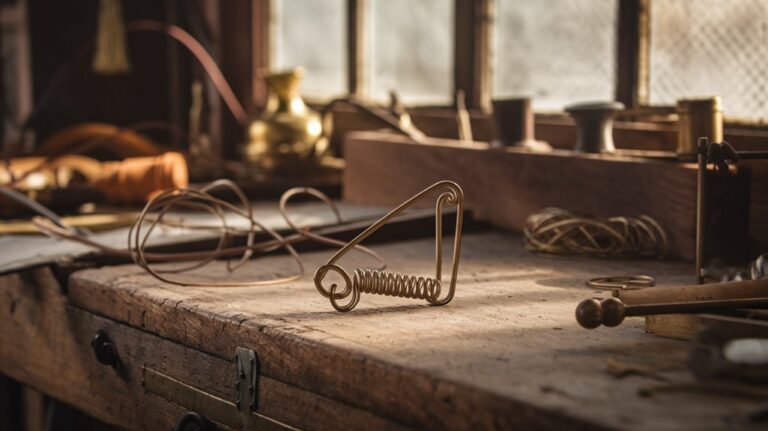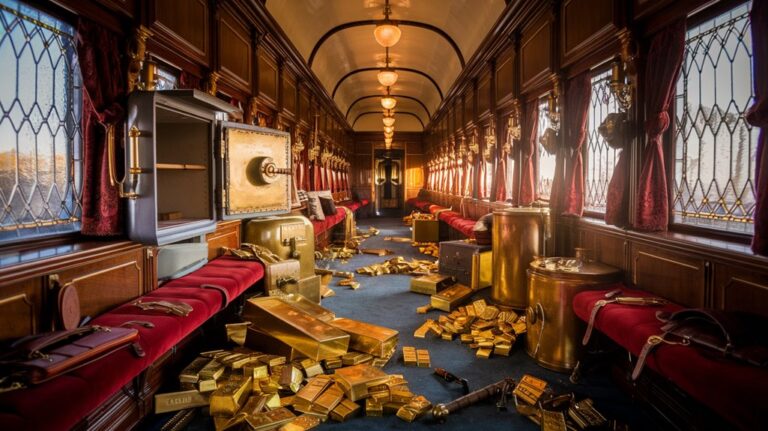Charles Darwin Ate Exotic Animals During His Expeditions
You might think of Charles Darwin as a thoughtful naturalist taking notes or a serious scientist developing theories, but he was also an adventurous eater with an unusual appetite. During his famous expeditions, he didn't just observe exotic animals – he ate them. From his early days in Cambridge's Glutton Club to his journey aboard the HMS Beagle, Darwin's culinary pursuits weren't just about satisfying his hunger. His gastronomic adventures would prove to be more significant than anyone could have imagined.
Darwin's Exotic Food Club Days at Cambridge
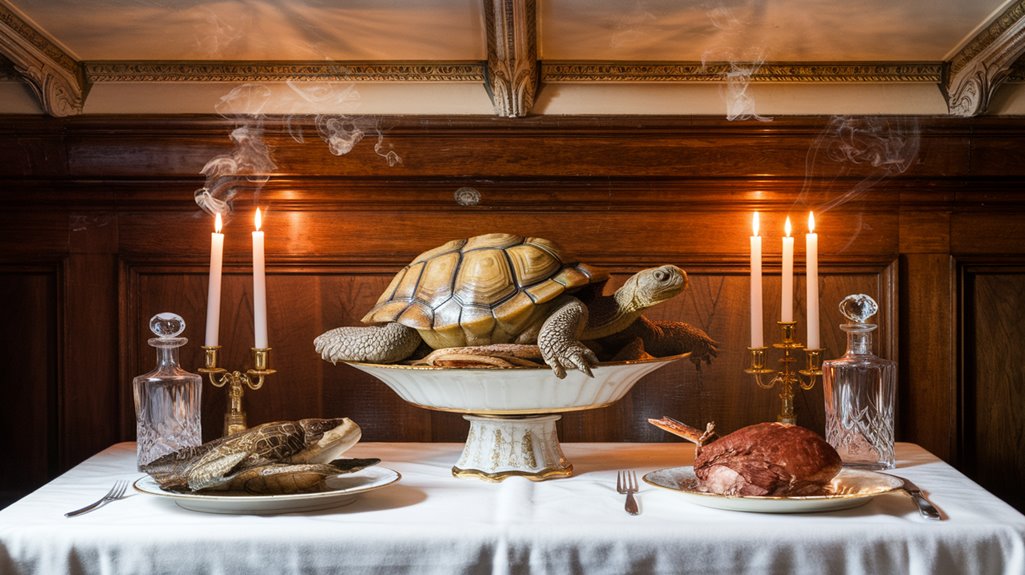
While studying at Cambridge University, Charles Darwin co-founded the Glutton Club, a rather unusual dining society dedicated to eating exotic meats.
You might be surprised to learn that this Cambridge dining group emerged as a direct challenge to another campus club that claimed to be adventurous eaters but stuck to conventional fare.
Each week, Darwin and his fellow members gathered to explore "strange flesh" and sample creatures that had never before graced human plates.
Their ambitious goal was to push the boundaries of conventional dining by introducing unknown birds and beasts to their palates. The club enjoyed dining on hawks and herons during their adventurous weekly meetings.
Though the club initially enjoyed success in their exotic meats pursuit, it eventually dissolved after one particularly unpalatable meal proved too much for the members to stomach. The club's demise came after serving a particularly tough brown owl that members found impossible to eat.
The HMS Beagle's Culinary Adventures
Life aboard the HMS Beagle presented unique culinary challenges that would test both crew and passengers alike.
You'd find yourself maneuvering dietary challenges in the ship's cramped quarters, where the galley's limited space and storage constraints affected meal preparations. The vessel's culinary adaptations included relying on preserved foods, which were just gaining acceptance in the navy, along with fresh catches from ports. The ship carried six and a half tons of provisions during its voyages.
You would've noticed how the strict social hierarchy influenced dining arrangements, with the captain eating separately from other officers in the messroom. These dining arrangements were made even more challenging by the 90 feet long ship size.
Darwin's experiences exemplified the ship's diverse menu, as he sampled exotic meats like armadillo and iguana. Most significantly, he unknowingly ate a rare rhea during Christmas dinner in 1833, discovering his mistake halfway through the meal.
From Pumas to Giant Tortoises: Darwin's Food Journey
Before joining the HMS Beagle's expedition, Darwin cultivated his taste for exotic meats as a member of Cambridge University's Glutton Club.
You'll find his culinary anthropology fascinating, as he sampled everything from hawks to brown owls, though the latter's "indescribable" taste dampened the club's enthusiasm. The club members gathered weekly for tastings of unusual birds and beasts.
During his voyage, Darwin's adventurous palate led him to consume pumas that tasted like veal, iguanas, armadillos, and giant Galapagos tortoises. As a naturalist aboard the HMS Beagle in 1831, his five-year journey allowed him to sample local fauna while conducting his scientific observations.
He even praised a 20-pound rodent as the finest meat he'd ever tasted.
However, ethical considerations emerged when he accidentally ate an unclassified lesser rhea.
Upon realizing his mistake, he immediately halted the meal and preserved the remaining parts for scientific study, demonstrating how his gastronomic exploration sometimes conflicted with his scientific mission.
Scientific Observations Through Consumption
Throughout his scientific career, Darwin's culinary adventures served as more than just exotic dining experiences – they provided valuable scientific insights into species' anatomy and adaptation. His taste exploration included iguanas, armadillos, and a substantial rodent he deemed the finest meat he'd ever eaten.
These dining experiences weren't merely about satisfying curiosity; they offered hands-on opportunities to study animal anatomy and physiology up close. His observations of these species helped him understand how genetic variations contribute to survival in different environments. Similar to his work with climbing plants, Darwin methodically documented and analyzed the structural features of the animals he consumed.
You'll find that Darwin's consumption of exotic creatures aligned perfectly with his scientific methodology. As a member of Cambridge's Glutton Club, he combined his appetite for unusual meats with his passion for understanding evolutionary implications.
When he consumed a rhea, only to later realize it was a rare species, you can see how his scientific mindset led him to attempt preserving its remains for study.
The Victorian Era's Influence on Exploration and Diet
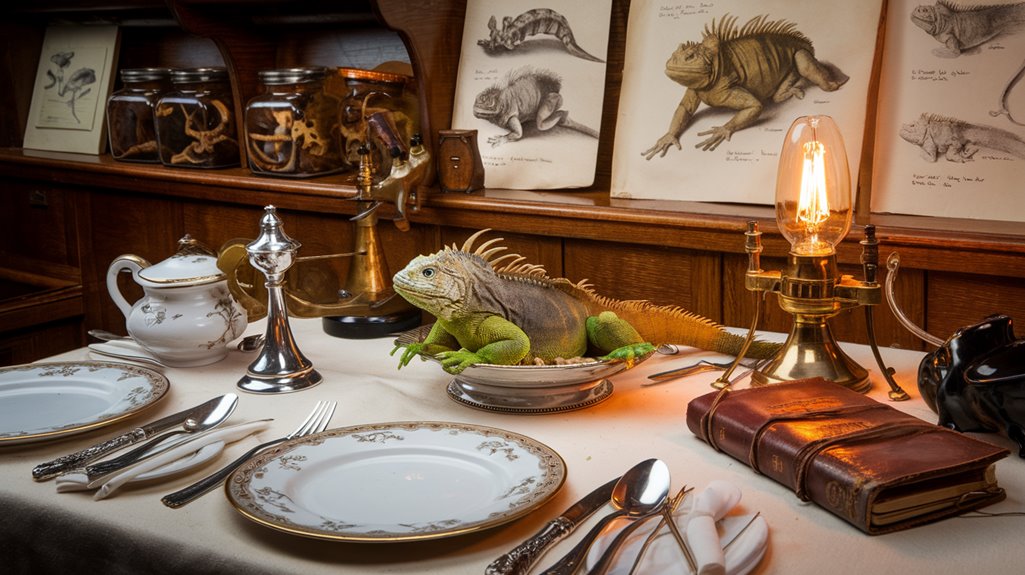
Darwin's culinary adventures reflected a broader Victorian-era phenomenon that shaped both exploration and dietary habits. The era's emphasis on exploration introduced new species and culinary possibilities, while agricultural improvements enhanced food availability and nutrition.
During this time, Victorian diets were remarkably diverse, especially in urban areas where you'd find abundant fish varieties like herring, sprats, and eels. Fresh vegetables were easily accessible with onions costing halfpenny for a dozen bunches.
The exploration impacts went beyond mere discovery – they transformed how people understood and consumed food. You'll notice that the era's dietary practices were characterized by organic, seasonal foods with high nutrient density. Public health records show that mid-Victorians were actually healthier than modern populations.
Working-class individuals maintained active lifestyles that demanded substantial calories, yet their diets remained unprocessed and naturally sourced.
These factors combined to create a unique period where exploration and dietary evolution intersected meaningfully.

